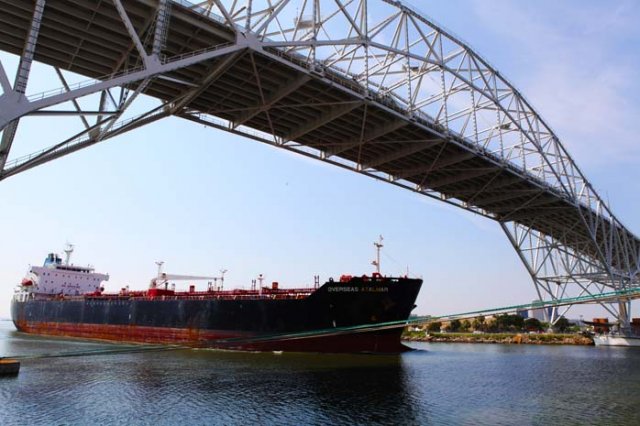August 30, 2018

Few members of the world agricultural community are following the tariff war between the U.S. and China more closely than the soybean farmers and exporters in Brazil, a Texas A&M University trade expert says.
As most U.S. soybean farmers know, Brazil has become the No. 1 competitor for the U.S. in the world soybean markets. Until now, they have mostly sold soybeans to China when U.S. supplies were unavailable.
“I was in Brazil two or three weeks ago, and they were very interested in the developments here with the U.S. trade policies and China,” said Dr. Luis Ribera, director of the Center for North American Studies at Texas A& M University. “They were very interested in what was going on and how things might get resolved.”
See also:
Part 1: Trade wars hurt producers, consumers
Part 2: NAFTA has been successful; agreement expected soon
Part 3: China’s response to tariffs hitting soybean farmers hard
Until fairly recently, U.S. producers have been shipping $12 to $14 billion worth of soybeans to China annually. Sales have declined sharply, however, since Trump administration officials imposed 25 percent tariffs on $60 billion of China’s exports to the U.S., and China responded with 25 percent tariffs, mostly on U.S. agricultural products.
Many believe Brazil is uniquely suited to take over the U.S. role as the primary supplier of soybeans to China’s growing livestock sector, given its phenomenal growth as a soybean producer and as a player in the world economy, says Ribera, who is also program director for international projects with its Texas A&M’s Agricultural and Food Policy Center.
Big Player
“Let me give you some perspective so you can see how big of a player in world production and trade they are,” said Ribera, a speaker at a Food and Agribusiness Webinar conducted by the University of Arkansas System Division of Agriculture. Click on https://bit.ly/2MWvZS7.
Brazil, which has a population of more than 200 million people, has increased its gross domestic product by an average annual rate of 15.2 percent (from $736.6 billion to $2.08 trillion) since 2005). Its per capita income has increased from $3,910 to $10,035 in the same period.
“This is a market with a lot of people who have a little more money than they had in 2005,” said Ribera. “They are very interested in trying to get a larger market share for their agricultural exports.”
Since 1977, Brazil’s farmers have increased their soybean plantings by fivefold – from 7.07 million to 35.09 million hectares. (U.S. farmers are believed to have planted 88.2 million acres or 35.7 million hectares in 2018.)
“They have expanded their soybean production quite a bit,” said Ribera. “But the second thing they’ve expanded quite a bit is corn, the second-season corn. In the Midwest – Mato Grosso do Sul and Goias – they have increased soybean production followed by corn production. So basically, they double-crop. As soon as they harvest soybeans, they plant corn.
“In terms of soybean yields, they are very close to what we see in the U.S. But they have become much more efficient in terms of yield for all their crops compared to where they were just a few years ago.”
Brazilian officials recently announced they believe the country’s soybean farmers will exceed those in the U.S. in the 2017-2018 crop year with Brazilian growers harvesting 117 million tons compared to a total of 116.48 million tons for those in the U.S.
Between 1977 and 2017, the three states in the Brazilian Midwest – the states of Mato Grosso, Mato Grosso do Sul and Goias – increased their grain production by 340 percent, something called the Brazilian miracle, Ribera noted. Now crop experts are wondering how much farmers in the new expansion area of MATOPIBA + PA, a region to the northeast of the Midwest, can increase their production over the next 20 years.
Production Potential
“If there is demand, if the price signals are favorable, they could produce a lot more food products in the Midwest region and this new region of MATOPIBA + PA,” he said. “That will be an interesting time for world agriculture.”
In the near-term, Ribera said, the fall months will prove a major test of what happens to export sales of U.S. soybeans. That’s when most of Brazil’s 2017-18 soybean crop will have been exhausted and the Chinese will have to turn to other sources – such as the U.S. – for soybeans.
Brazil and the U.S. currently have a complicated trading relationship with Brazil’s exports of food and agricultural products to the U.S. exceeding Brazil’s imports of similar products from the U.S. by a significant amount.
Ribera and the Center for North American Studies are currently conducting a review of the trade flows between the countries and the potential for future developments for the economies of Brazil and the United States. For information, click on http://cnas.tamu.edu/.
About the Author(s)
You May Also Like






